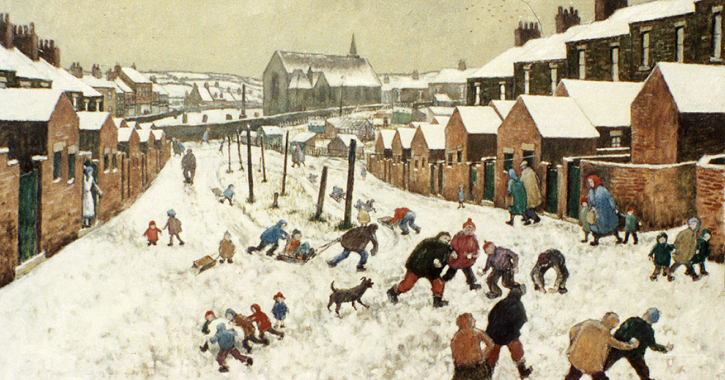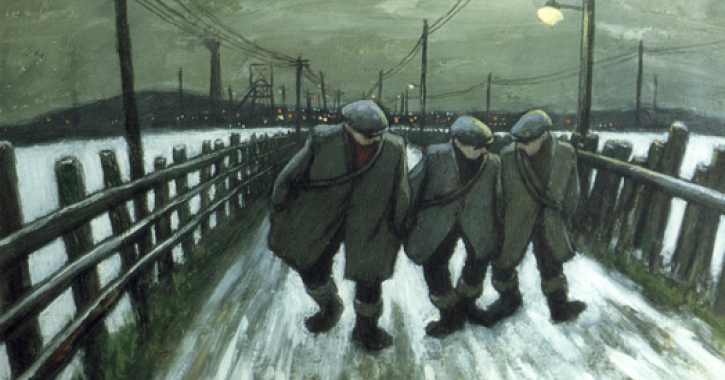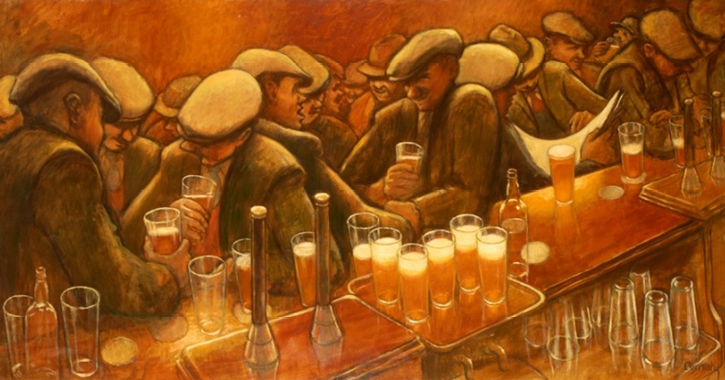Throughout 2019, Durham is celebrating the life of one of the county's most remarkable artists - Norman Cornish MBE, and we were lucky enough to glimpse a unique insight about the man himself by a member of the Cornish family.
Mike Thornton - the Son-in-Law of Norman Cornish sat down in conversation with the award-winning artist in 2007 to ask Norman if he had particular pieces of his work which were his personal favourites.
Norman Cornish was perhaps the most famous artist to emerge from the North East of England in the 20th Century and he became one of the most famous British artists of his time.
His evocative paintings and drawings provide an unrivalled social record as a Chronicler of an important era in English history. His observations of people and places are a window into a world which no longer exists outside but which Norman has immortalised for us all with its struggle, its beauty, its squalor and its dignity.
In a recorded conversation with me on 2007 I asked Norman if there were particular pieces of his work which he regarded as his personal favourites.
.jpg)
Portrait of Sarah
“I many times drew and painted pictures of my wife Sarah, when she was busy with household chores, especially when she was knitting. I felt her prayer - like attitude gave the pose of sanctity and her knitting was her way of praying, really, doing her best to keep our home and children together. This portrait represents a pose which was typical of thousands of women who were heroines of the coalfield.”
Norman always acknowledged the huge contribution his wife made to his success and her loyal dedication to their family and home. A bedroom which doubled as a studio during the 50s and 60s required great patience and understanding by Sarah.

Man at Bar With Dog
“This is more than a man and a dog really because the composition is very carefully constructed within a rectangle.”
The elements of the picture are very carefully arranged in a sophisticated exercise in draughtsmanship including the angle of the man at the bar, the creases in the man’s trousers, and the geometry of the beer pumps balanced with the hind legs of the dog. Throughout the picture are the curvilinear shapes from the lower left corner continuing through the subject including his hands and the pint glass.

Spennymoor Snow Scene Mount Pleasant
“This picture has a lot of things I feel about it-kiddies playing in the snow for instance. The church crowns the whole thing and is symbolic of the whole area in a non-religious kind of feeling. Compositionally, take the roof of the row on the right and move left across the picture in a long diagonal-from one side to the other. If you look at the other side, another long diagonal. The two diagonals cross a rectangular theatre of operations. People playing echo the diagonal shapes. Look at the lady in blue on the right echoing that shape, another diagonal.”
One of Norman’s significant influences was Pieter Breugel the Elder (1525-1569) and this is evidenced in this scene of everyday life which captures children at play in the snow, and the adult remarks can almost be heard.

The Pit Road
“After walking along this road, winter and summer, it naturally becomes a significant part of one’s life. To watch the man ahead of you plodding resignedly through this man made world is a subject which demands to be drawn again and again”.
Norman started work on Boxing Day 1933 and walked the Pit Road every day for the next 30 years in all weathers and different times of the night and day. Within five miles of the pit there were some 135 collieries at various stages of working, closing and re-opening. The impact of the environment was everywhere.

Image reproduced by kind permission of The University of Northumbria Permanent Collection
The Busy Bar
“The actual men themselves created circular rhythms within the group. The circular rhythms knit together like in a jersey. It is human drama based on gesture and attitude. It is monochromatic. The accent is on atmosphere which contrasts the earthy humanism with the mysterious glitter of the beer and the glasses”.
As an underground miner Norman wasn’t an outsider as was LS Lowry. The beer in Norman’s glass gave him the passport to be able to share, observe and record the communal life in pubs because he could blend in and this gave him the opportunity to produce so many character drawings of his subjects.
Many people have grown to love and appreciate Norman’s work- which has evolved into a regional archive. Not because they’d lived it, but because they absorbed the nuances from his art, and so connected with their past and what has made them what they are today.
There is evidence of an ever deepening and strengthening emotional attachment by many people towards Norman’s work and their own identity.
Mike Thornton (Son-in-Law of Norman Cornish)
Related
Comments
Comments are disabled for this post.



 to add an item to your Itinerary basket.
to add an item to your Itinerary basket.
.png)





